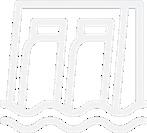NEWSLETTER

CONNECTING THE DOTS



CONNECTING THE DOTS

USACE research streamlines wetland delineation process
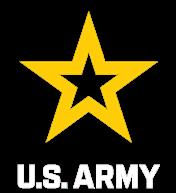

Growing up in Mississippi less than 30 miles from Vicksburg, I was vaguely familiar with the research and development being conducted by Vicksburg’s Waterways Experiment Station (WES). As a matter of fact, I had an uncle who worked at WES, which is now known as the U.S. Army Engineer Research and Development Center (ERDC) and is the forerunner of today’s innovative and collaborative research and development.
As the commander of the South Pacific Division (SPD), I now have much greater awareness of the depth and breadth of these world-class efforts, including those conducted by USACE engineers and scientists confronting one of the toughest challenges we face in SPD.


Atmospheric rivers can dump 25 to 50 percent of California’s annual precipitation in just a few events, making it difficult to know when to retain the water being held in our reservoirs and when to release it. That’s why SPD is proud to participate in Forecast-Informed Reservoir Operations, or FIRO, which is studying new methodologies to incorporate modern weather and streamflow forecasting to better guide these complex water management decisions.

During the initial pilot at California’s Lake Mendocino, FIRO enabled us to supply an additional 22,000 homes with water that would have been prematurely discharged under the old system. As this effort continues to expand, it’s exciting to be on the cutting edge of something that will benefit the entire nation.
This is just one example of the many ways we, here at SPD, are taking innovative USACE R&D out of the lab and putting it into practice. Another is the Coastal Resilience Index that will quantify the health and strength of beaches along the U.S. coastline. This knowledge will enable more proactive planning that ensures our beaches provide the best possible line of defense against atmospheric rivers and other storms that threaten the West Coast.
SPD recently partnered with ERDC to establish the first regional “proving ground” for the USACE Engineering With Nature® initiative, which seeks to align human, natural and engineering processes. This partnership will provide additional access to innovative science, technologies, models and engineering techniques that support the integration of natural systems and processes, ultimately making our projects more resilient.
From droughts to floods to wildfires and everything in between, SPD faces immense challenges that will only intensify in the face of changing climates. To meet this mission, we must lean into the expertise of the world-class USACE research and development community as they discover, develop and deliver the innovative answers we need.
Now more than ever, we must be proactive and make sound decisions that best use the funding we receive for our Civil Works projects. Our R&D is giving us critical knowledge to do just that and enabling us to deliver the engineering solutions our nation demands.
Essayons! Building Strong!
BG Antoinette “Toni” Gant Commanding General South Pacific Division…WE MUST LEAN INTO THE EXPERTISE OF THE WORLD-CLASS USACE RESEARCH AND DEVELOPMENT COMMUNITY
AS THEY DISCOVER, DEVELOP AND DELIVER THE INNOVATIVE ANSWERS WE NEED.PHOTO BY BRANDON BEACH - U.S. ARMY CORPS OF ENGINEERS PHOTO BY LUCAS BURNS - U.S. ARMY CORPS OF ENGINEERS
Stronger Shorelines: Index will strengthen coastal management decisions............ page 6
Innovation at Work........................................................................................................................ page 8
Securing Critical Systems: USACE team ensures Army’s and DOD’s data is protected........................................................................................................ page 10
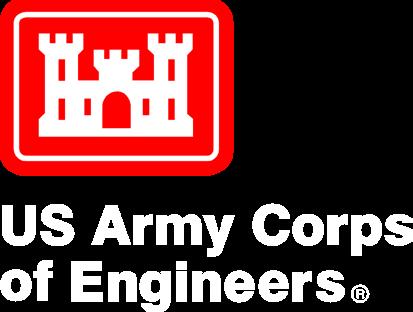
Stronger, Lighter, More Durable: Ultra-High Performance Concrete is key to a more sustainable and modern infrastructure network...................................... page 12
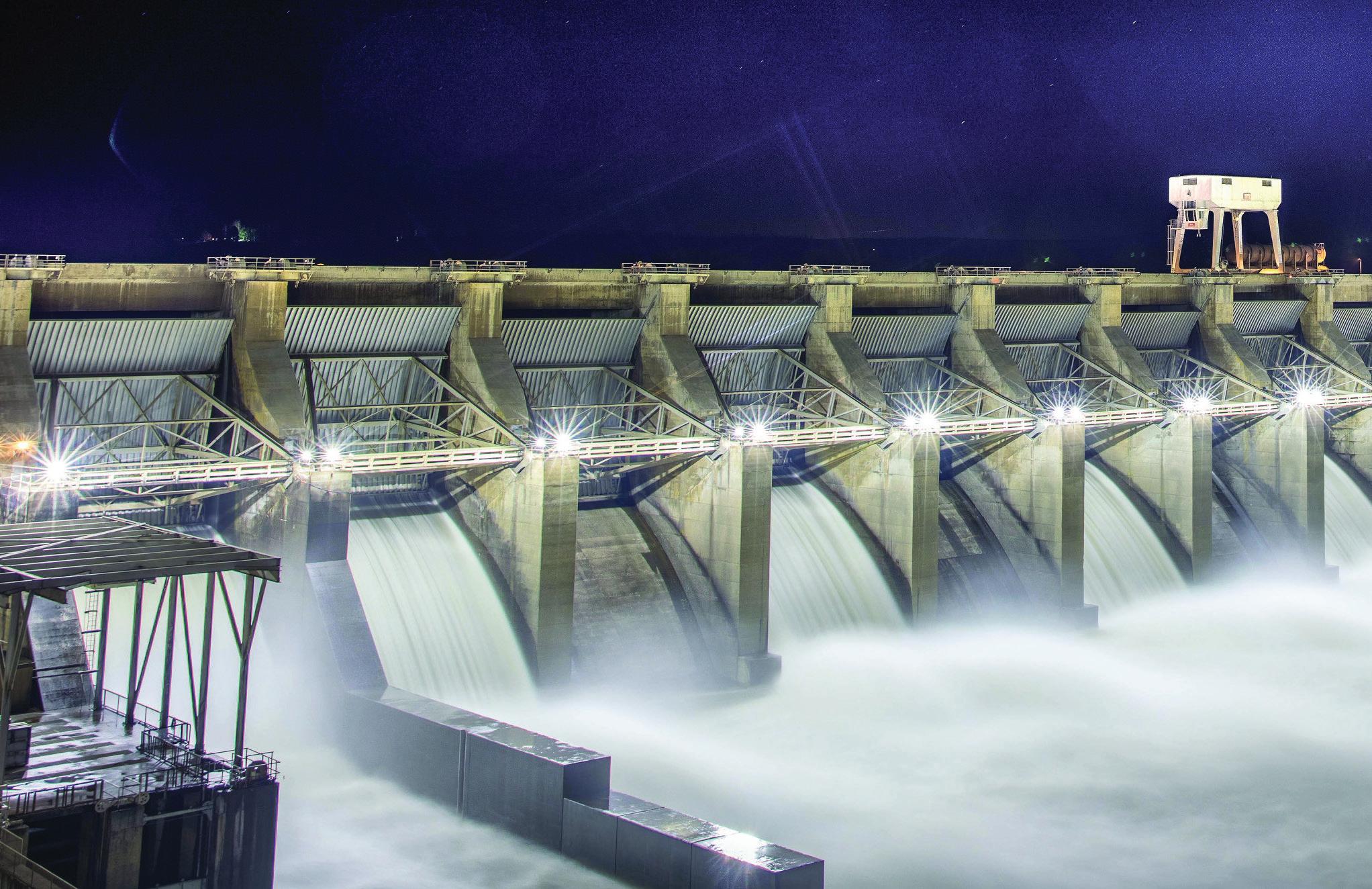
From Antiquated to Automated: Wetland delineation tool helps revolutionize regulatory process ............................................................................................... page 14
Connect With: Dr. Stephanie Wood ......................................................................................... page 16
USACE R&D Strategy: Top 10 R&D Priorities.......................................................................... page 16
Our mission is to deliver vital engineering solutions, in collaboration with our partners, to secure our nation, energize our economy, and reduce disaster risk.
Ice Harbor Lock and Dam, located on the lower Snake River near Pasco, Washington, was the first of the Lower Snake River Dams to be constructed. The first three of its hydro-turbine units were brought online in 1961, with three additional units coming online in 1976.
Coastlines are constantly shifting and reshaping, creating challenges for coastal managers. In response, USACE researchers have created a tool to assess the resiliency of our nation’s coastlines and improve coastal management strategies. The Coastal Engineering Resilience Index (CERI) quantifies research that began after 2012’s Hurricane Sandy to study why some beaches and barrier islands eroded rapidly, while others did not.
Combining lidar data from the USACE National Coastal Mapping Program with wave and storm surge information from USACE and NOAA models, CERI estimates maximum shoreline recession and beach overtopping for specified storm events. The index will enable data-driven coastal management approaches from headquarters down to the project level, highlighting areas that need the most attention, informing sediment management decisions and revealing how resilience has changed over time.
To read the full story, visit: https://www.usace.army.mil/Media/News/NewsSearch/Article/3373685/ new-engineering-index-will-strengthen-coastal-management-decisions/
Jennifer Wozencraft Research Physical Scientist U.S. Army Engineer Research and Development CenterTHIS ALLOWS US TO KNOW WHICH PARTS OF THE COASTLINE ARE MORE RESILIENT THAN OTHERS FROM A COASTAL ENGINEERING PERSPECTIVE .
JENNIFER WOZENCRAFT
CERI will help coastal managers prioritize the coastal areas that need the most attention



To learn more about these projects and programs, email:
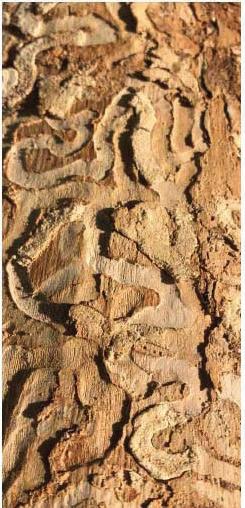
cerd.info@usace.army.mil


Fire Control • ERDC engineers and scientists are developing new techniques and technologies aimed at cleaning up and controlling the spread of oil spills across bodies of water. One of those new technologies, the fire boom, is composed of specially designed floating barriers to prevent oil spills from moving freely across a water surface, allowing cleanup crews time to burn spilled oil more efficiently. The fire-boom is being tested at ERDC’s Cold Regions Research and Engineering Laboratory (CRREL), which is among only a few federal government facilities with the licenses, equipment and personnel to safely perform in-situ burn testing.
Autonomous Emergency Response • As the U.S. Marine Corps begins to retire more than 900 Assault Amphibious Vehicles (AAV), there is an effort to upgrade and repurpose those vehicles for a civilian mission. ERDC’s Dr. Spicer Bak and Dr. Anton Netchaev are among those looking at how to convert these military vehicles into an autonomous system that can respond in emergency and disaster situations. During a recent conference at the U.S. Naval Surface Warfare Center in Bethesda, Maryland, Bak and Netchaev were among those helping to define the concepts of how these vehicles might be converted and used in a national emergency.

Costly Infestation • Researchers have published a technical note estimating the damage caused by an invasive species on USACE-managed lands. Dr. Nathan Beane, a research forester with ERDC’s Environmental Laboratory, and Nathan Pfisterer, an economist with the USACE Huntington District, calculated the Emerald Ash Borer (EAB) has caused nearly $122 million in damages. Based on evaluations of more than 200 USACE projects, the study estimates the insect has killed hundreds of millions of ash trees in the United States since the early 2000s, becoming the most destructive and costly invasive forest insect in North America. This analysis highlights the impact EAB continues to have on federal facilities, and the importance for continued federal investment to aggressively fight invasive species before they can drastically spread and impact the ecosystem.

Working Out of a Jam • Dr. Jeremy Giovando and Chandler Engel from CRREL met with officials in Alaska to discuss ice jams and mitigating the flood risk they pose. The team visited locations in the state that experience recurring ice-related flooding issues, including a site in Willow, Alaska, that had two in-place ice jams causing minor flooding. Giovando and Engel also spoke with representatives from the USACE Alaska District, NOAA-National Weather Service, Alaska Department of Transportation and the Municipality of Anchorage about future ice jam mitigation options. CRREL’s Ice Jam Database is a resource for emergency managers, engineers, scientists and planners that contains information on jams that have occurred in the U.S. dating back to the 1700s.


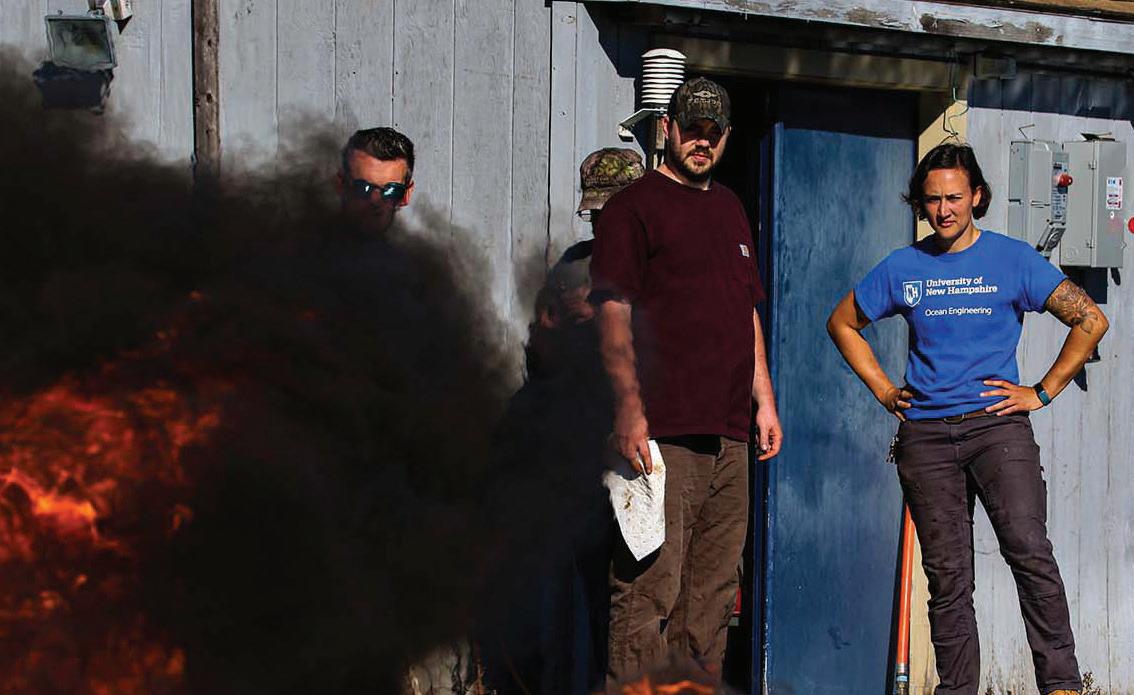



Rapid technological advancement has made cybersecurity a critical aspect of day-to-day Department of Defense operations. The Security Control Assessor-Validator (SCA-V) team, based at ERDC’s Information Technology Laboratory, is playing an integral role in securing vulnerable infrastructure and sensitive data.


The team, one of only eight appointed by the U.S. Army Network Enterprise Technology Command Cyber Security Directorate, conducts assessments on all types of information systems, including systems belonging to USACE.
The 16-member team performs an average of more than 100 assessments per year and recently conducted 36 assessments in Southwest Asia. The group can also perform remote assessments, a process it created during the COVID-19 travel ban and one that is still used when applicable by teams across the United States.
To read the full story, visit: https://www.usace.army.mil/Media/News/NewsSearch/Article/3373773/usace-team-ensures-armys-and-dods-data-is-protected/
SCA-V team performs an average of more than 100 assessments per year
USACE team ensures Army and DOD’s data is protected Kelly Hills Computer Scientist U.S. Army Engineer Research and Development Center... WITHOUT COMPREHENSIVE SAFEGUARDS … DATA AND SYSTEMS COULD REMAIN UNKNOWINGLY AT RISK.
KELLY HILLS
The increased use of Ultra-High Performance Concrete (UHPC) is part of an overall solution USACE is researching to both revolutionize and modernize our nation’s critical infrastructure.


UHPC panels that are stronger, lighter and more durable than existing concrete panels protected by steel armor are gaining more interest throughout USACE as Districts search for ways to extend the life of infrastructure components such as locks and dams.

UHPC panels are about half as thick as those created using traditional concrete, and do not require the additional step of being faced with armor. Traditional concrete panels have a strength of 5,000 to 8,000 pounds per square inch (PSI), while those made using UHPC have an estimated strength of 22,000 PSI after just 28 days of curing.
Over many years of research, ERDC developed mixtures, techniques and guidance that will ease the transition of implementing this technology into existing and future construction and rehabilitation projects.

To read the full story, visit: https://www.usace.army.mil/Media/News/NewsSearch/Article/3373781/stronger-lighter-moredurable-ultra-high-performance-concrete-is-key-to-a-more/
Outages at one lock can cost $1.7 billion annually in additional transportation charges

Concrete is key to a more sustainable and modern infrastructureDr. Stephanie Wood Research Civil Engineer U.S. Army Engineer Research and Development Center Existing lock wall construction with steel armor



 Dr. Jacob F. Berkowitz Research Soil Scientist U.S. Army Engineer Research and Development Center
Dr. Jacob F. Berkowitz Research Soil Scientist U.S. Army Engineer Research and Development Center

Since the 1600s, the United States has lost more than half of its wetlands, which provide an array of ecological benefits. To protect against further degradation, the U.S. government established a policy of “no net loss” of wetlands.

As a result, USACE requires the completion of a wetland delineation for essentially all construction activities that occur in the nation’s wetlands, accounting for approximately 74,000 regulatory actions each year connected to wetlands and aquatic resource permitting.

To simplify and expedite this process for the public, ERDC scientists collaborated with Detroit District regulatory staff to develop Automated Wetland Determination Data Sheets (ADS), which were released to the public in April 2022. The ADS streamlines and improves the accuracy of the permitting process by automatically calculating many wetland field indicators.
To read the full story, visit: https://www.usace.army.mil/Media/News/NewsSearch/ Article/3373622/from-antiquated-to-automated-usace-wetland-delineation-tool-helps-revolutionize/
Development of the wetland delineation tool seeks to streamline processing of TENS OF THOUSANDS of regulatory actions each year

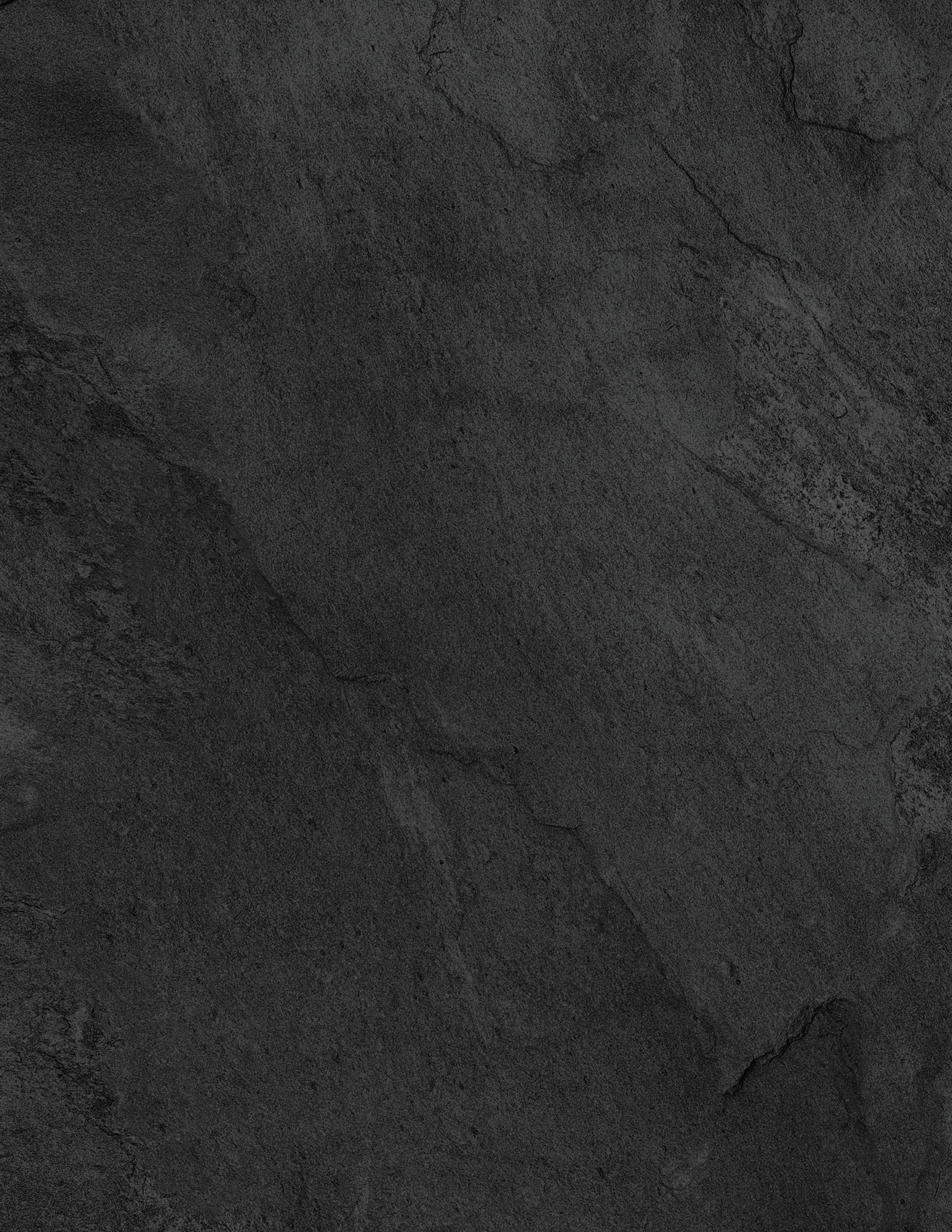

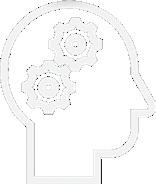
I am involved in a lot of Civil Works research projects. In these projects, research and development helps us understand the behavior of materials, structures and systems, and enables us to develop new materials and technologies that can improve the performance, durability and safety of our civil infrastructure.
Where do you see the need for more R&D?
We need more investment in research and development for Civil Works overall, and thankfully, that is coming in FY24. With the new efforts at ERDC, we will be able to develop sustainable solutions to long-standing, recent and foreseeable problems faced by our Districts.
Below are the current Top 10 USACE R&D Priorities to address the nation’s toughest challenges with multi-disciplinary solutions. These strategies lay the foundation for a bold, new era of USACE R&D. @USACEHQ
Ensure Environmental Sustainability and Resilience
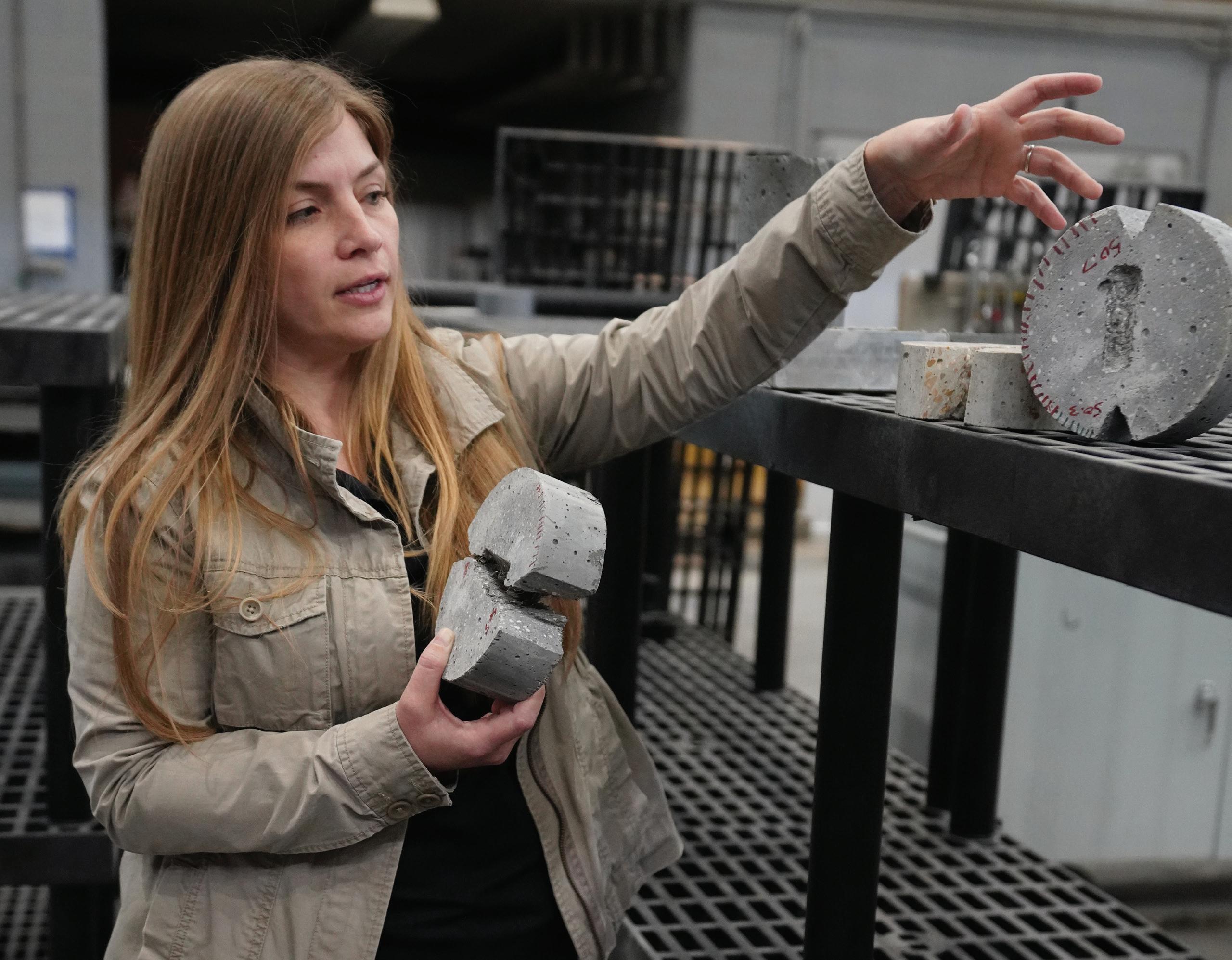
Secure Reliable Installation Energy
FOLLOW US
Modernize Our Nation’s Infrastructure

Support Resilient Communities
Enable Smart & Resilient Installations

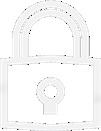


Revolutionize and Accelerate Decision Making
Improve Cyber and Physical Security
Protect and Defend the Arctic
SCAN FOR MORE ON USACE R&D PRIORITIES

